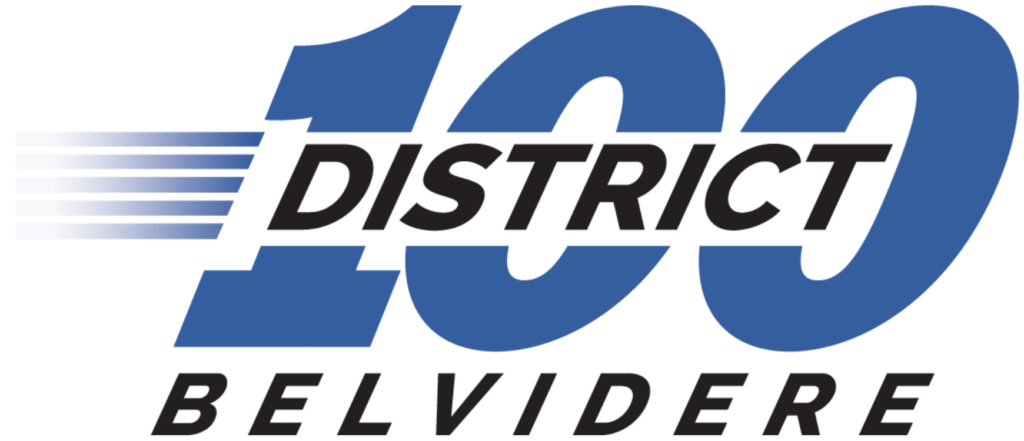In the vibrant urban landscape of the Belvidere Community Unit School District 100 in northern Illinois, leaders cherish and prioritize voices in their strategic endeavors. Discover more about Belvidere’s uplifting journey and strategic utilization of Possip data, narrated by Frank Mandera, Director of Quality Assurance and former Principal.Belvidere Community Unit School District 100
Erin Milligan-Mattes, Possip Reporter and a seasoned instructional leader who served in the Commissioner’s Office at the Tennessee Department of Education, shares best practices and advice from Possip Partner, Belvidere Community School District.
In education, strategic planning acts as the guiding star illuminating the path for schools and districts to achieve their aspirations. Yet, amidst the wealth of data and statistics, lies a goldmine often overlooked: the invaluable feedback from families and staff members.
Jump To...
- Why does staff and family voice matter for strategic planning?
- How do Belvidere principals and district staff use Possip?
- What are some of the ways they use Possip to measure strategic goals?
- What are some of the ways they use Possip to measure strategic goals?
- How does Belvidere use Bonus Questions for strategic planning?
Why does staff and family feedback matter for strategic planning?
“Starting with staff, they’re the ones in the trenches. They’re the ones working with the kids. They know the things that are happening in schools and in the environments that they’re working in. Not just of the kids themselves, but also the community. So, we need to make sure that we’re tapping into that kind of feedback from the staff because they give you a nice global perspective of what’s happening in their microcosm of a school.
In the way of families, it opens up the bubble a little bit more. It’s not just the school that they’re looking at, but also the resources that we might be able to provide for those families. Whether it’s SEL support, tutoring for academics, future programming, or what they might want for summer school.”
How do Belvidere principals and district staff use Possip?
“As a building principal, I was able to look at the type of things my building needed and build programming based on the feedback. I got to build tutoring programs, after school or before school care. But also things for our students such as a science group, guitar club, or an art club.
In this position [district staff], I tend to look at what kind of trends are percolating out there. What are some common themes that we can carry across the district to give some of that global support in a specific area.”
What systems does Belvidere use to view or follow up on feedback and praise?
Feedback: “I share information from the prior survey, and then I’ll share where things were at last year at this time to see if we see some common trends happening. I really enjoyed the midyear report because that took some of the work off of me to find trends. I was able to share that out directly with building administrators and central office staff to give feedback about what we’re seeing via the feedback loops we’re providing for people.”
Praise: “We have always encouraged principals to share those individual praise comments. At least Ms. Smith knows that she got some recognition and that people saw that she’s going above and beyond her normal job duties. From the district perspective, if I see that there’s five comments for Mr. Jones, I’m going to reach out to that teacher and give them some positive praise.”
What are some of the ways they use Possip to measure strategic goals?
Belvidere has been using Possip data to measure key performance indicators (KPIs) in at the building and district level for the last several years. Possip feedback via sentiment rates serve as a measure for goals three and four in their strategic plan with a goal of earning 98% favorable response rate for families and staff within five years.
- Goal 3: 98% Family Satisfaction
- Goal 4: 98% Staff Satisfaction
As Frank Mandera explains, “A couple of years back, we were using Possip for the first time and that became part of the strategic planning process to look at that data and get a pulse of where our staff and our families are at. It’s just kind of blended into the climate and the culture of what we look at.”
How does Belvidere use Bonus Questions for strategic planning?
Belvidere embraces open-ended Bonus Questions as a valuable tool for gaining deeper insights into areas for improvement. Moreover, the district empowers principals by granting them the autonomy to select their own bonus questions, ensuring the feedback they receive is truly meaningful. Thus, this approach fosters a sense of ownership and encourages a more grassroots approach to feedback.
As Frank says, “We had been very prescriptive in the beginning when we first started doing Bonus Questions. Last year, I was starting to get feedback from the principals about wanting to know more. ‘Is there a way for me to actually ask this type of question next time?’ We do, Possip!”
Since implementing this approach, district staff actively seek input from principals ahead of their Possip Pulse Check. This allows them to either choose from suggested questions or craft their own. This flexibility ensures that each school can address unique aspects of their operation, empowering principals to select questions that align with their specific needs and goals.
**
The Belvidere Community Unit School District 100 shines as a beacon of positivity in educational strategic planning. Through the thoughtful integration of staff and family feedback using Possip data, they’ve fostered a culture of collaboration and empowerment. Their commitment to listening and responding to the needs of their school community inspires optimism and progress.

Mr. Frank Mandera Director of Quality Assurance Belvidere Community Unit School District 100

Speed Read (tl;dr) of How Belvidere Community Unit School District 100 Uses Feedback in Strategic Planning

Belvidere integrates staff and family feedback into their strategic planning.
Through dynamic utilization of Possip data, Belvidere Community School District showcases the transformative impact of feedback in shaping programming, tracking progress, and fostering a sense of ownership among stakeholders.
Belvidere’s approach not only inspires but also exemplifies the boundless potential of Possip data.
Read below for resources, tips, and the why!


